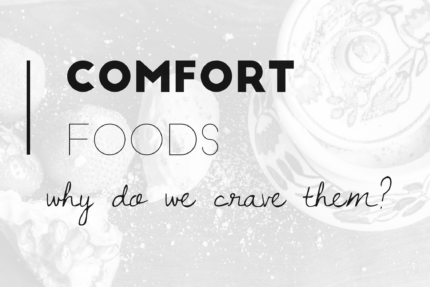It’s that time of year again when we are all jumping on the New Year’s Resolution ban wagon. You may have goals of self-improvement, to focus on your health, to get fit, or to lose weight. It is also that time of year when holiday bills come rolling and the stress of balancing all of your goals with your current obligations makes life feel like a challenge. It can be stressful!
Have you ever noticed that the more stressed you are the more you turn to comfort food? A little counterproductive isn’t it.
Well you’re not the only one and a recent study dug deeper into why this happens. It seems that stress affects our HPA axis, leading us to reach for comfort foods.
HPA Axis
Hypothalamic-Pituitary-Adrenal (HPA) Axis. Okay, big words here so let’s break it down. The hypothalamus is a part of the brain that controls the endocrine (hormone) system via the pituitary. The pituitary then receives signals from the hypothalamus and sends hormones to different parts of the body like the ovaries, thyroid, and adrenals. This brings us to the third part of this axis – the adrenals. Your adrenal glands are a set of small glands that sit on top of your kidneys. They secrete a variety of hormones such as cortisol, estrogen and progesterone.
So how does this all connect? When you perceive a threat the signal goes from your hypothalamus to the pituitary which then signals your adrenal glands to start priming the fight or flight system, so that you can get to safety.
Stress and cortisol
Cortisol, commonly known as the stress hormone, is secreted by your adrenal glands in response to stress. It could be being chased by a bear or a looming deadline – what’s the difference, right? During this stress response our body is flooded by cortisol, we crave high-fat and high-sugar foods, and the foods we do eat are stored as abdominal fat.
What did the study find?
When they compared high-stress and low-stress groups, the high-stress group had a greater stress response when faced with a stressful situation. They also found that the high-stress group had a lower cortisol response compared to the low-stress group. This may seem backwards because you may think high stress = high cortisol release. The importance of this finding was that the HPA axis response was dampened in the high-stress group. (As a reminder, we need a proper HPA response to feel awake in the morning, have energy throughout the day, and be able to sleep at night- when the response is dampened your energy and brain function likely won’t be where you want it to be.)
What can you do?
Eating the comfort foods lower your cortisol which sends a message back to the brain (remember the HPA axis) saying it feels better. Yes, they are called comfort foods for a reason! They can actually make you feel more safe and relaxed. The problem is, that you will get this comfort response at the expense of your waistline, and health.
Do you know what else will lower cortisol and send that same message? Yoga, walking, deep breathing, journaling, or taking a bath, and the list could go on and on as everyone is different.
The two take-home messages from this study are that we first need to be aware of when we are in a high-stress state, and second, we need to find things other than food to reduce our stress response. Walking is one of my favourite ways to de-stress, but when I’m in a situation when I can’t get outside I find 10 deep breaths extremely effective. What are your favourite ways to de-stress?

